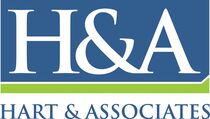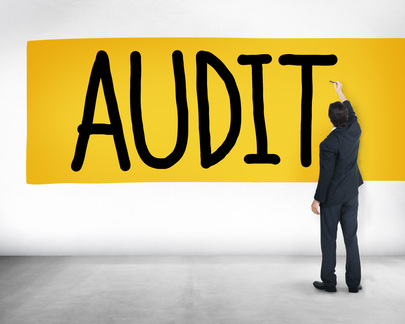|
Planning can help you achieve a comfortable retirement. Here are five suggestions to consider: Start a retirement savings program as early as possible and contribute regularly. The longer and more consistently you contribute, the larger your nest egg will become, even before the compounding provided by growth and earnings. Regular, reasonable deposits wisely invested will easily outgrow sporadic and insignificant contributions. Deposit your funds in tax-deferred accounts. Invest in tax-deferred accounts to the greatest extent possible. If your employer offers a tax-deferred plan, such as a 401(k), contribute as much as you can, particularly if the plan provides matching funds. Investigate individual options, such as IRAs, for additional planning opportunities. Why? One of the advantages of tax-deferred accounts is that investments that aren’t reduced by taxes will grow and compound at a faster rate. Other advantages include the ability to control your withdrawal rate and the amount of any accompanying tax, and the opportunity to postpone recognition of taxable income until retirement, when you’ll likely be in a lower tax bracket. Establish an investment plan. As funds within your retirement accounts accumulate, you’ll have to decide how to invest them. Establish an investment plan as early as possible. Then follow your plan consistently, revising only enough to keep matters on course, correct for deviations, and respond to unexpected events. Track your portfolio and re-balance as needed. Maintain a balance among growth, income, and short-term investments, and adjust the ratios as you age. The standard rules of thumb:
Once you’re retired, plan withdrawals so your funds will last the rest of your life. To avoid running out of funds, plan for a long retirement.
A successful retirement plan requires forethought, discipline, and monitoring. For assistance, contact your CPA or financial advisor. This is general information and should not be acted upon without first determining its application to your specific situation. Please contact your CPA or tax advisor for additional details.
DSO = Accounts receivable balance / Annual net credit sales * 365.
DSO is measured in days and it represents how many days it takes to collect the customer invoice balance and convert it to cash. Whether the DSO measure is “good” or not varies by industry as well as the terms you’ve set for your clients. If you’ve set your invoices to be due in 30 days and your DSO is 45 days or less, that’s pretty good. If you’ve set your invoices to be due in 10 days and your DSO is 60 days, then you might want to consider a more aggressive collection policy to speed up your cash flow. Here are some tips to reduce DSO: Invoice clarity Make sure your invoices are accurate and clear. Make it clear whom to make the check out to, where to mail it, the due date, and the amount due. All of these features should be easy to find on the invoice. Consider discounts A common discount term is 2/10, net 30. This means the customer can take two percent off their invoice if they pay in 10 days; otherwise they owe the whole amount in 30 days. If you have customers from large companies, discounts are often required by policy to be taken and this can speed up your payments from them. Consider electronic payments Going paperless with your invoicing as well as your payment process can speed up the entire billing cycle. Customers getting their bills earlier will also pay earlier. So, what’s your DSO?
Accounting automation has come a long way in the last few years, and the process of handling invoices and receipts is included in those changes. No longer is there a mountain of paperwork to deal with. In this article, we’ll explain some of the changes in this area.
Vendor Invoices Most invoices are now sent electronically, often through email or from accounting system to accounting system. Some accounting systems allow the invoice document, usually in PDF format, to be attached to the transaction in the accounting system. This feature makes it easy for vendor support questions as well as any audit that may come up. Some systems are smart enough to “read” the invoice and prepare a check with little or no data entry. Others are able to automate three-way matching – this is when you match a purchase order, packing slip, and invoice together – so that time is saved in the accounts payable function. Receipts Today’s systems allow you or your bookkeeper to scan in or take cell phone photos of receipts – whether cash or credit card – and then “read” them and record the transaction. This type of system cuts way down on data entry and allows the accountants to focus on more consultative work rather than administrative work. Some vendors will email you receipts so all you have to do is use a special email address where your accountant is copied or forward the receipt as you receive it. The biggest challenge for business owners is getting into the habit of photographing the receipt and sending it to the accountant. The days of shoebox receipts are not completely over, but cloud-savvy business owners are definitely enjoying the alternative options of today’s paperless world. Approvals Some systems automate bill approval. This is especially handy for nonprofits or companies with a multi-person approval process. It cuts down on approval time and the time it takes to pay the bill. New Systems Here is a short list of new systems that automate a part of the vendor payment or receipt management system. There are a lot more, in addition to your core accounting system, and all of them have different features, platforms, software requirements, integration options, and pricing.
If you are interested in finding out more about automating your accounts payable invoices or receipts, please reach out anytime.
This is general information and should not be acted upon without first determining its application to your specific situation. Please contact your CPA or tax advisor for additional details.
Talk with your CPA or financial advisor for help in maximizing the Section 179 deduction for your business asset purchases.
This is general information and should not be acted upon without first determining its application to your specific situation. Please contact your CPA or tax advisor for additional details.
According to recent statistics, budget cuts, staff attrition, and a heavy workload for IRS employees mean your chances of undergoing a tax audit are less than 1%. Does that sound like a non-event to you?
Don’t be lured into a false sense of security. The statistic is a blended rate covering many types of incomes and taxpayers. Here are some of the reasons returns were audited:
Be aware that even if you don’t fit into any of these categories, your return may still be selected for audit. That’s one reason it’s essential to keep good records to support all deductions and credits you claim on your tax return for at least three years after filing. Examples of required record-keeping include:
If any of the above risk factors are present in your business’s books, talk with your CPA or financial adviser on what steps to take to protect yourself from an audit.
This is general information and should not be acted upon without first determining its application to your specific situation. Please contact your CPA or tax advisor for additional details.
|
AuthorSuccessfully meeting the challenges inherent to new and smaller businesses provides me with a special type of satisfaction. Archives
February 2022
Categories
All
|







 RSS Feed
RSS Feed







